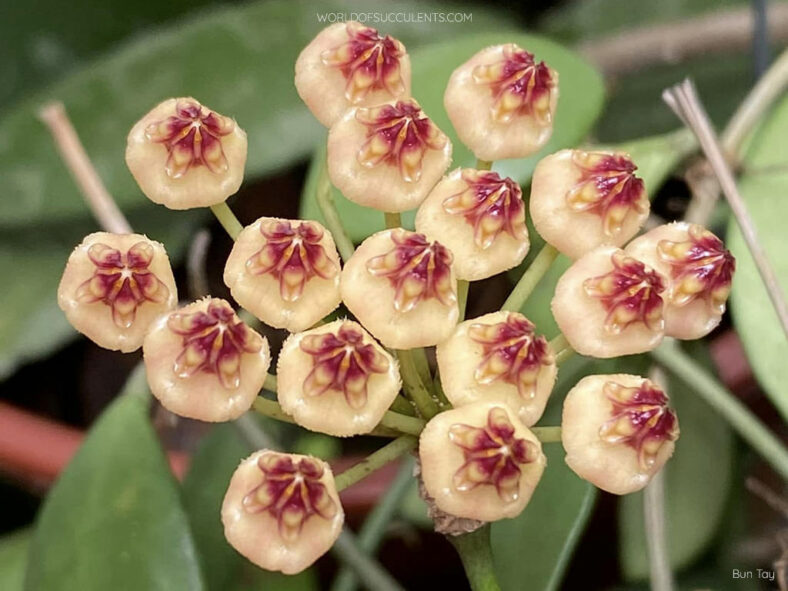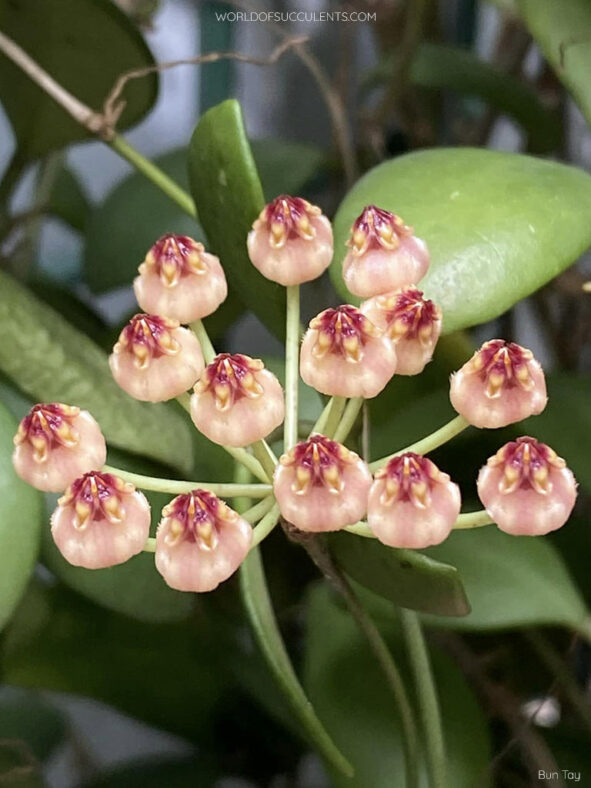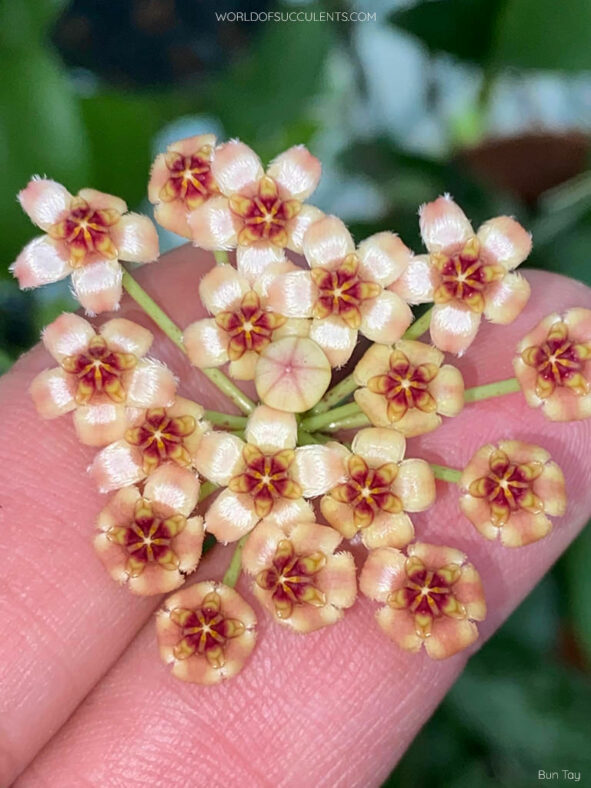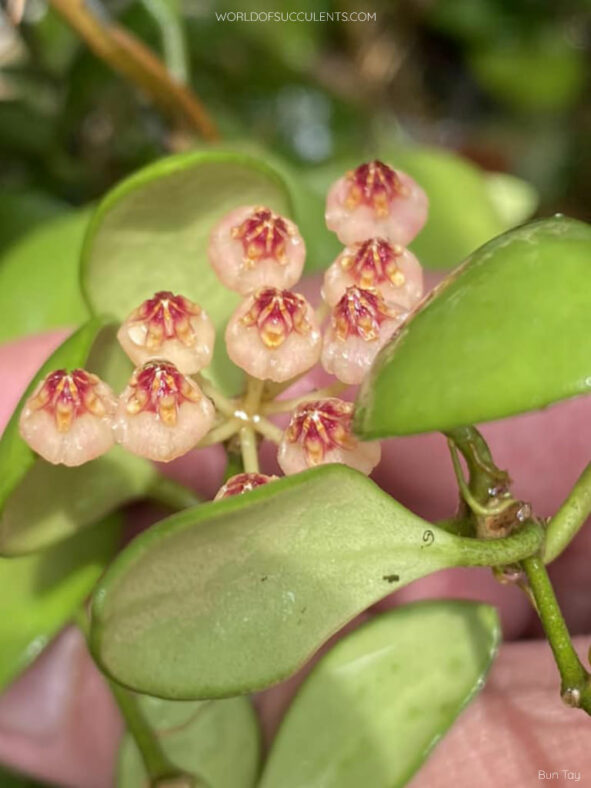Hoya brevialata is perfect for planting in a hanging basket. It is ideal for those looking for a low-maintenance plant that can thrive in indirect sunlight.
Scientific Name
Hoya brevialata Kleijn & Donkelaar
Common Name(s)
Many-flowered Hoya, Porcelain Flower, Shooting Star Hoya, Wax Plant
Synonym(s)
Asclepias stellata, Centrostemma multiflorum, Cyrtoceras multiflorum
Scientific Classification
Family: Apocynaceae
Subfamily: Asclepiadoideae
Tribe: Marsdenieae
Genus: Hoya
Etymology
The specific epithet "brevialata" (pronounced brev-ee-uh-LAY-tuh) means "having short wings" and refers to the typically short anther wings of this species.
Origin
Hoya brevialata is native to Sulawesi, an island in Indonesia. It grows as a prostrate and pendant epiphyte in primary forest.
Description
Hoya brevialata is an impressive plant that forms large clumps of prostrate and pendent stems with subcircular to elliptic leaves. The leaves are fleshy and stiff, attached to the stem by a short petiole, and can measure up to 2.8 inches (7 cm) long and 1 inch (2.5 cm) wide. They are pale green or yellowish to reddish when exposed to intense sunlight. When young, the stems and leaves are covered with short, soft hair.
During the summer, Hoya brevialatat produces attractive clusters of 15 to 25 fragrant flowers. The corolla can reach a diameter of up to 0.25 inches (0.6 cm) and has finely hairy, almost white to reddish lobes, usually curled back. The corona is red and yellow, with the inner lobes held much higher than the outer.

How to Grow and Care for Hoya brevialata
Light: Even if this plant can tolerate lower light levels, it may become weak and leggy if the light is too low, producing fewer leaves and flowers. Therefore, keeping it indoors in bright, indirect sunlight is best.
Soil: Well-draining soil that provides excellent aeration and does not hold too much water is most important for growing a healthy plant.
Temperature: Hoya brevialata thrives in hot and humid climates, so keep it away from drafty windows and doorways during the colder months. It grows best in USDA Plant Hardiness Zones 11a to 11b, with average minimum winter temperatures ranging from 40 to 50 °F (4.4 to 10 °C).
Watering: As this plant is sensitive to overwatering, soak the soil thoroughly during the spring and summer, but allow it to dry out before watering again. Otherwise, you will increase the risk of root rot, and your plant will not be happy. It is relatively dormant during the fall and winter and needs only moderate watering.
Fertilizing: While Hoya brevialata is not a particularly heavy feeder, it can benefit from high-potassium fertilizer at half strength every two weeks during the growing season.
Repotting: As an epiphyte, this plant has shallow root systems and does need a deep container. It also does not require frequent repotting. It actually prefers to be slightly rootbound, so repot it in spring only if it outgrows its container.
Propagation: Although layering is the easiest, using stem cuttings is the most popular method of propagating Hoya brevialata. Using leaf cuttings can be more challenging, while starting it from seeds is the simplest but the most time-consuming method. For best results, take cuttings only when the plant is actively growing and sow the seeds in spring and summer.
Learn more at How to Grow and Care for Hoya.
Toxicity of Hoya brevialata
Hoya brevialata is considered non-toxic, so it is safe around kids and pets.
Links
- Back to genus Hoya
- Succupedia: Browse succulents by Scientific Name, Common Name, Genus, Family, USDA Hardiness Zone, Origin, or cacti by Genus
Photo Gallery
Click on a photo to see a larger version.


